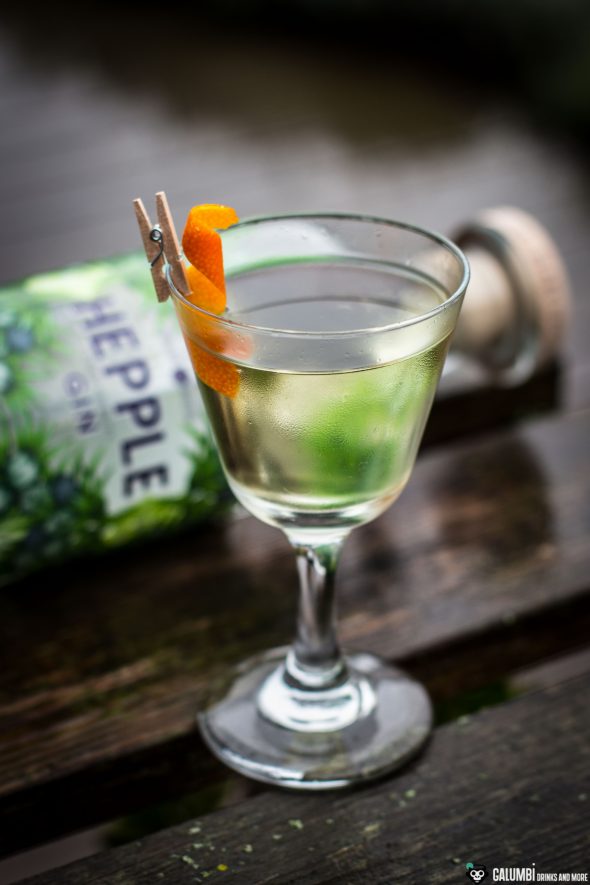
The classic Martini Cocktail has never really had an easy time in Germany. Although it is also known as the “King of Cocktails” in the English-speaking world, where it is linked to countless anecdotes and where almost philosophical currents have developed around the question of how to prepare it the right way. In German-speaking countries, it still takes a backseat to what it should be. (provided test products)*
Although almost everyone believes to know what a martini is, the fact that you occasionally see people sipping the Italian vermouth of the same name with an olive from a martini glass, quickly leads to a certain form of disillusionment. And especially at a time when people are talking about the gin hype or even a bloating gin bubble, it’s all the more surprising. On the other hand, the Gin & Tonic has become the crowd‘s favorite (although about fifteen years ago nobody wanted to drink it), but the Martini is far away from such popularity.
So whenever I am moderating a gin tasting, I regularly try to take a stand for the King of Cocktails and want to show what the martini is or at least what it can be: one of the greatest drinks in the history of cocktails. Of course, this claim also stands and falls with a suitable gin – and that’s where the bottle comes in, which I’d like to review here today.
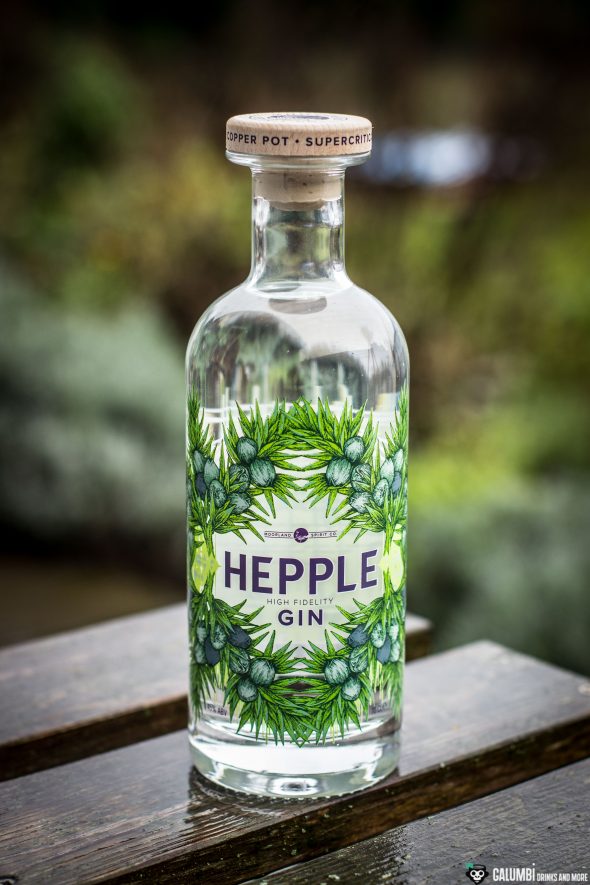
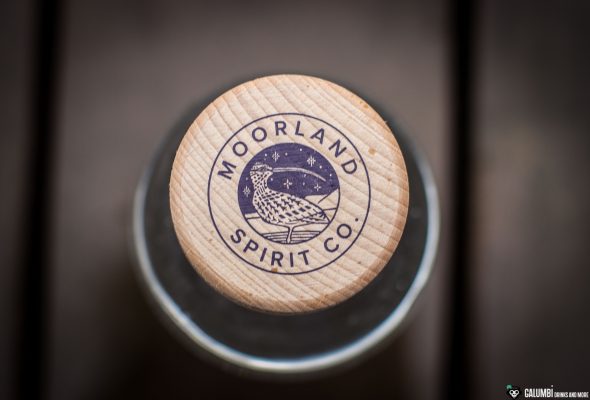
The so called Hepple Gin comes from the north of England, from Northumberland not far from the Scottish border, where also a small village of this name exists. The Moorland Spirit Co. produces its gin (along with other distillates) in a very modern distillery and goes very innovative ways here. And all this with a clearly defined goal: to create a gin for the perfect martini.
Of course, this is not a small ambition and I will try to find out whether this can succeed in the following. Before that, however, it is very interesting to go into detail about the production of the Hepple Gin. It is produced according to a method called “Triple Technique” by the manufacturer. First a classic London Dry Gin is distilled on a pot still. The botanicals used here are juniper, currants (including the leaves), Douglas fir needles, coriander and fennel seeds, liquorice root, iris and angelica root – not a freaky but an interesting composition. In the second step, five individual “herbal spirits” or macerates of green, immature juniper, Douglas fir needles, black currant leaves, lovage and Amalfi lemon peels are distilled separately and then blended (such cuvee processes are for example also known from Hendrick’s gin). In the third and final step of the “Triple Technique”, a juniper essence is extracted from a juniper macerate by means of a CO2 pressure infusion (comparable to the process used in perfume production). The products of all three steps are finally combined to form the final gin. Although this gin may not bear the label „Dry Gin“ due to the last step, but considering the reason and the intention behind the elaborate process, this is certainly one of the best reasons that I have come across so far for not using this designation. The final product is bottled at an ABV of 45% vol.
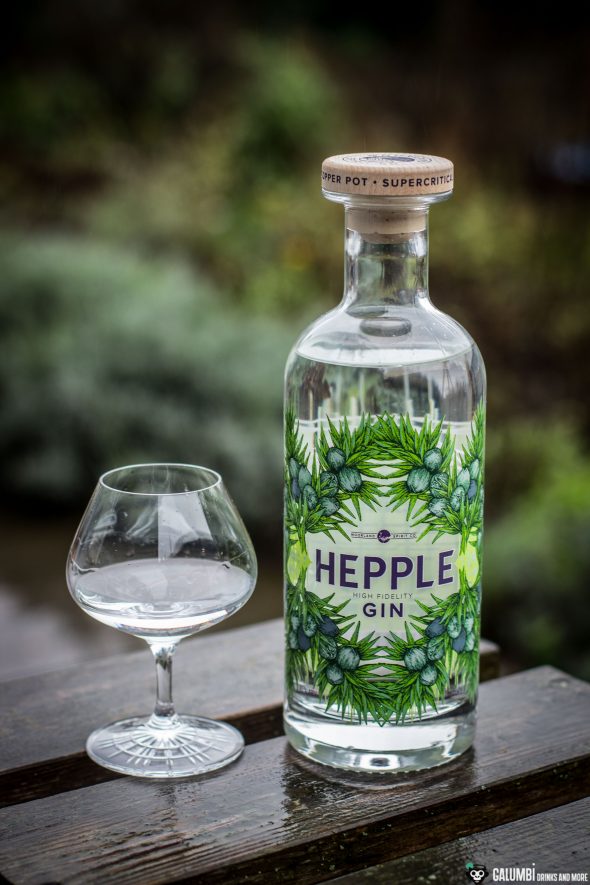
Tasting Notes:
Aroma: That’s what I call a juniper gin! Although the first impression is anything but one-dimensional, the juniper is clearly the main actor here and I almost want to say: finally once again! It is characterized by a certain pepperiness, herbaceous and woody notes, reminiscent of pine and spruce needles, but also fruity notes of green apples, lemon peel and light grapes appear. I like the aroma very much!
Taste: The juniper also plays the first fiddle virtuously on the palate. With a whole bouquet of herbs, from which above all the coriander and again woody spruce tones stand out, the Hepple Gin shows how one can also skillfully take a different path in times of the New Western Dry Gin flood. Candied lemon peel, some ginger and cardamom are also part of the game and give the Hepple Gin a pleasantly complex character.
Finish: Relatively long and spicy with juniper and herbs.
Of course, after all these preliminary skirmishes, I had to put it to the test and try the Hepple Gin in a Martini. And what should I say? In fact, you will find an excellent martini in your glass! Whether it’s perfect or not, well… since I love variety, there’s no such thing as the perfect martini in my eyes, but this one here is certainly playing in the top league: Crisp, clear, beautiful juniper tones and an excellent herbal character that harmonizes excellently with the vermouth, what more could you ask for?
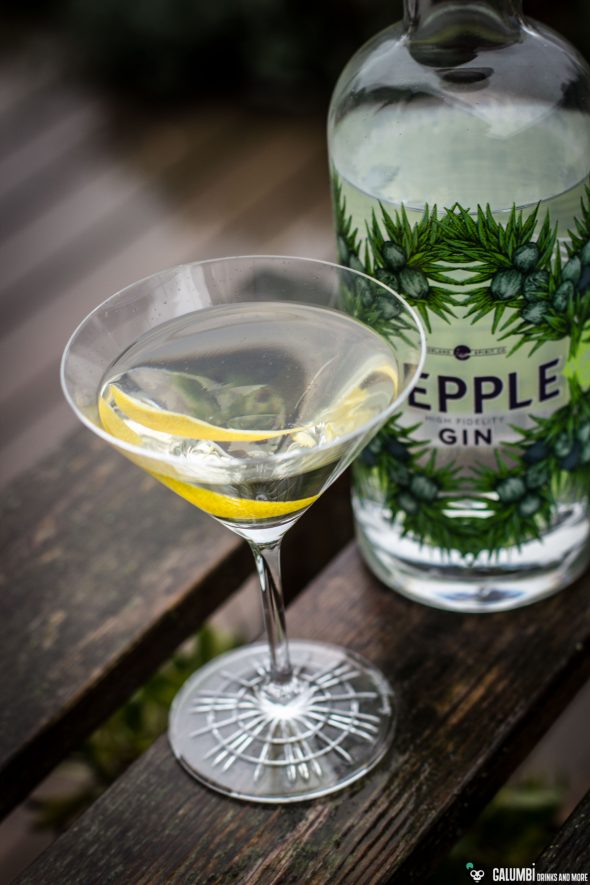
The Hepple Gin in a classic Martini
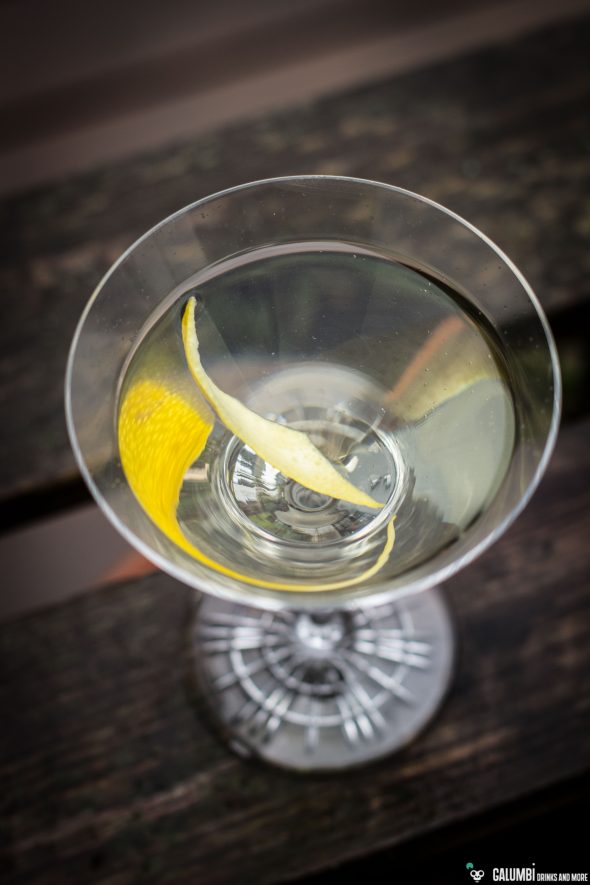
Well, maybe you could ask for another Gin & Tonic (here I’d go for a classic Fever Tree or a Fentimans Tonic), but to be honest, I was even more in the mood to try a drink that stays close tot he martini. And here I stumbled across the H. and H. cocktail in Harry Craddock’s 1930 Savoy Cocktail Book. The drink strongly reminds of the Vesper Martini (right, that’s the thing James Bond is having), but besides Gin and Kina Lillet it also has a hint of Curacao. Since the classic Kina Lillet is no longer produced since 1987, I replaced it with Cocchi Americano and also relied on the very nice Pierre Ferrand Dry Curacao. Contrary to Mr. Craddock’s suggestion to shake the drink, I stirred it nonetheless. I hope he and also Mr. Bond will forgive me. However, the result is just wonderful! Thanks to the Dry Curacao, the drink also emphasizes the fruity side of the Hepple Gin, but remains dry, crisp and fully aromatic. Harry Craddock states in his recipe collection that he doesn’t know exactly what the name of the drink stands for. And so he asks below the recipe of the H. and H. cocktail: “„Happier and Happier? or Hoarser and Hoarser? or Hazier and Hazier?“”. Well, who knows, maybe it is meant to be Hepple and Hepple cocktail?

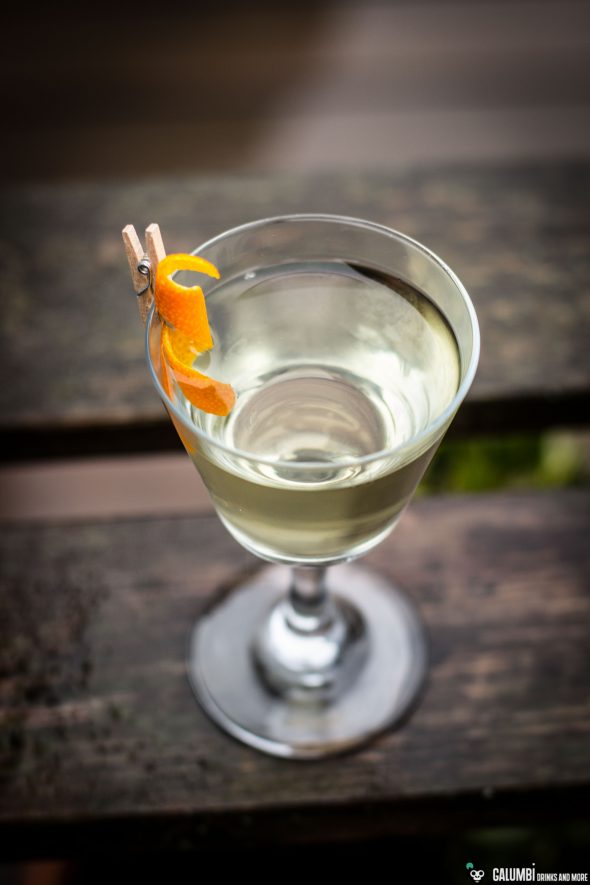
Recipe “H. and H. Cocktail” (adapted from H. Craddock, Savoy Cocktail Book, 1930):
6 cl Hepple Gin
2 cl Cocchi Americano
2 bar spoons Pierre Ferrand Dry Curacao
Preparation: Stir all ingredients on ice until cold and strain into a pre-cooled glass. Spray with the oil of an orange zest.
Glass: Martini or Goblet
Garnish: orange zest
Oh, there is still another novelty (well, I may be a little late with this designation) which comes from the same distributor (Tender Spirits, at least here in Germany) than the Hepple Gin and which I want to focus on today as well: Supasawa – Seriously Sour Cocktail Mixer. This is nothing less than an alternative to lemon and lime juice based on distilled water with citric acid, malic acid, phosphoric acid, tartaric acid, succinic acid, salt, sugar and sodium benzoate. Admittedly, this makes me frown and raises the question: do I need something like this? The answer is certainly not easy to give. Especially for bar use, Supasawa promises to make work much easier and save time. On the other hand, I cannot imagine replacing lime and lemon juice with an artificially produced acid source. However, luckily nobody wants that in this form either. Neither the Belgian manufacturer, nor the distributor, nor I in the future here on the blog. Nevertheless, I want to shed some light on the question of how it differs from the two natural juices. And also, how I can imagine to use it (also at home).
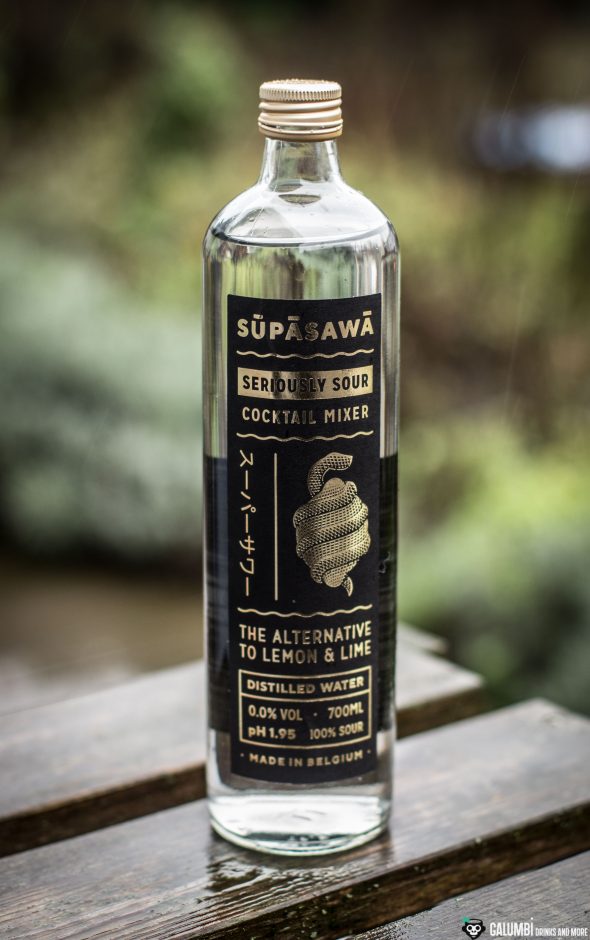
A direct comparison of acid sources is of course a bit difficult because they are usually not tasted pure. But since I didn’t want to shy away from any dangers even today, I tightened my facial muscles and did the acid test.
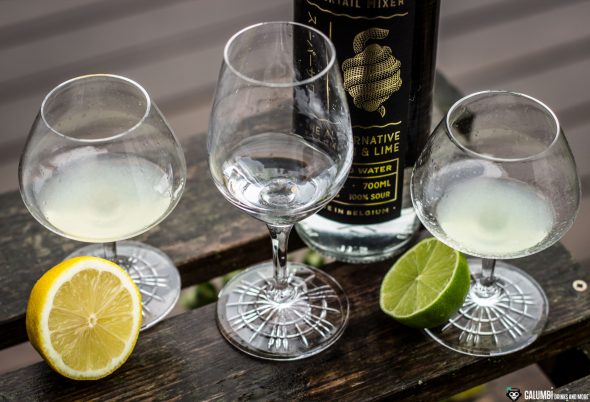
The ultimate acid test 🙂
And here, Supasawa cuts a surprisingly passable figure. But in fact it is no substitute for real juices. Especially the fruity freshness is what I miss here. Compared to classic lemon juice, I notice above all that the lemon simply brings a greater freshness kick with it, but goes a little stronger to the taste buds. And compared to the lime, Supasawa simply lacks the characteristic spicy note, which makes numerous cocktail classics what they are. Well, if you think you can replace your juices with Supasawa without a trace or change, you’re wrong. But what Supasawa can do in any case is to offer an acceptable acid alternative that actually works in drinks. Moreover, the completely clear-transparent color is certainly interesting, because you have a means in your hand to finally produce clear sours or to give highballs an optically exciting note. I also tried this in a Tom Collins, for which I first stirred gin, sugar and Supasawa in a mixing glass (I wanted to be on the safe side and not risk turbidity from the shaking) and finally poured it in a highball glass and topped it off with soda. Tastes a tiny bit different, but very good. And it really looks stunning!
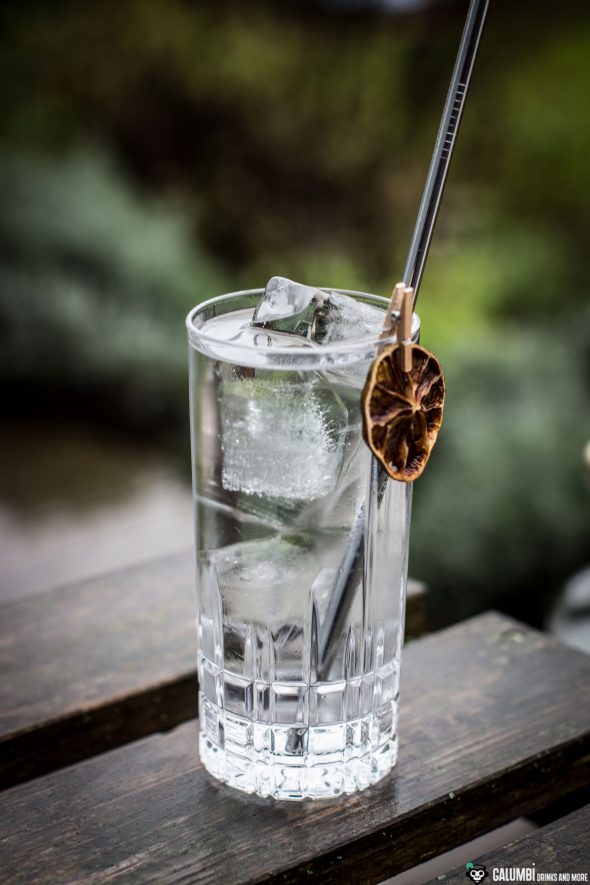
In short: Alternative to lime and lemon: yes, if you know what you want and what you don’t want. However, it is not a replacement.
Buying sources: At specialized retailers or online.
*The fact that these products have been sent to me free of charge for editorial purposes does not – in any way – imply any influence on the content of this article or my rating. On the contrary, it is always an indispensable condition for me to be able to review without any external influence.

Pingback: Burgen Korn & Appelkorn Highball - Galumbi
Pingback: Ryoma Rhum Japonais & Haru Mai Tai (春マイタイ) - Galumbi
Pingback: Waldmeister Highball - Galumbi
Pingback: Kiyomi & Teeda - Two Japanese rums from Okinawa - Galumbi
Pingback: The Ultimate Gin Guide VII: The Categories | Augustine-Bar